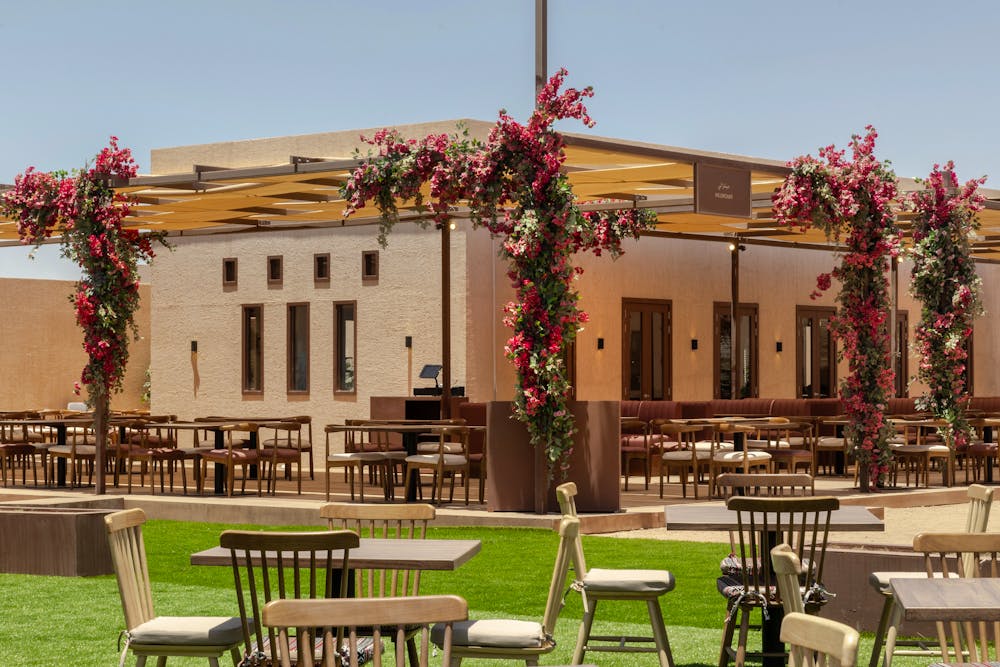Tabuk Camel Race
A beloved symbol of Saudi Arabia, the camel solidified its place as a historical and cultural icon during the inaugural Tabuk Camel Festival from June 15, 2023 through June 30. Record crowds descended on this remote village in the northwestern part of the Kingdom to view the contest and indulge in recreational activities. Designlab Experience translated The Camel Club’s vision into a viable reality by meticulously overhauling the barren desert landscape into a massive state-of-the-art complex using sustainable technologies and recyclable materials that caused no harm to the terrain.
The Designlab Experience team converted the stark desert landscape near the ancient village of Tabuk into a 35,000 square meters contemporary destination. This massive project combined architectural execution with sustainable practices that honored the local culture and traditions. In harmony with the surrounding environment was an earthy color palette of white, cream and brown featured throughout the space, and flourishes of colorful flower beds and greenery showcased regional foliage.
The Royal Building, which is handicapped accessible and measuring almost 60 feet-high, stood out among the desert blue skies for its sleek modernist lines. Built solely for the VIP guests on an elevated ten-foot wood platform overlooking Heritage Village, its metallic structure, covered in plywood, was treated with a creamy, white-colored stucco on its exterior. Floor-to ceiling windows provided natural light inside, while mashrabiya screens inspired by classic local design supplied an additional cooling element. The modern interiors featured a dining buffet, prayer rooms, conference rooms and kitchens.
Outside, a three-level lounge, encased in a brown metal frame extending the entire exterior length, shaded guests with a roof secured with cooling fabric. Customized built-in couches with terra cotta-colored cushions, wood coffee tables, plywood floors and plush deck chairs arranged in intimate U-shaped sections for groups of 15 created a serene, comfortable atmosphere for viewing the events.
Heritage Village, the bustling hub within the complex was built for a capacity of 4,000 daily spectators. At its center was a giant stage with a flatscreen tv reaching nearly 50 feet high. It streamed camel competitions during the day and featured live performances in the evening, easily visible from the Royal Area. Throughout the property were sand-color stucco buildings, replicas of the ancient Saudi mud houses typical in the rural desert for their temperature regulating qualities. Some included mashrabiyas and pergolas made with a painted steel frame mimicking wood, while stretchy fabric supplied protection overhead.
Dining options were plentiful, including four restaurant buildings equipped to offer proper kitchen service, six food trucks, and eight food and beverage carts. Ample seating for dining and watching the festivities was scattered throughout the complex. A lively pop-up market under palm tree rooftops added another element of excitement to the atmosphere, where forty local artisans and produce vendors came to sell their wares.
